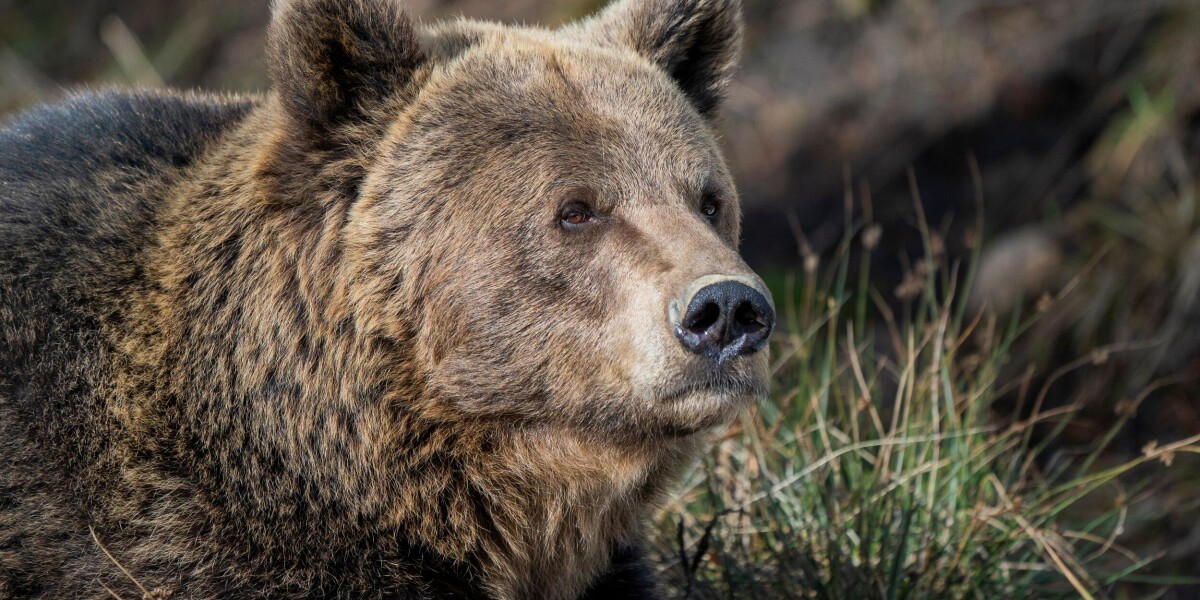
Bears in pyrenees prepare for long winter sleep - how many are there?
- Select a language for the TTS:
- UK English Female
- UK English Male
- US English Female
- US English Male
- Australian Female
- Australian Male
- Language selected: (auto detect) - EN
Play all audios:

As the colder nights draw in, bears in the Pyrenees are preparing to hide away until spring; they will pause their metabolisms and slow down as a way to deal with a lack of food over the
season. Bears do not technically hibernate but rather enter a long and light sleep, and they do still occasionally come out to explore. HOW MANY BEARS ARE THERE AND HOW DO THEY PREPARE?
There are now around 70 bears in the mountain range after they were introduced into the region from Slovenia in 1996. The most recent count by the Office français de la biodiversité (OFB),
and its Haute-Garonne-based ‘brown bear team’, found that at the end of the 2022-2023 winter period, there were 76: 35 males and 39 females, plus two whose sex has yet to be determined. The
bears are monitored by a 15-strong team, plus 450 volunteers, who help to count them via tracks, observations, and fur findings, plus videos and photos from around 60 automatic cameras
attached to trees. > Découvrez toute la série de photos en vidéo de la caméra > automatique qui a pu capturer #Sorita et ses 2 #oursons en Vallée > d'Ossau le 16 août 2023 en
cliquant ici :https://t.co/2sjRCwl7MG > #ours #pyrénées > > — Pays de l'Ours (@PaysDelOurs) September 14, 2023 The bears live across the mountain range, over an expanse of
5,700 square kilometres. Experts estimate that there are: * Six in the western Pyrénées (Béarn, Navarre, Aragon) * Sixty-nine in the central Pyrénées (Comminges region in Haute-Garonne,
Couserans in Ariège, the Val d’Aran, Catalonia, Andorra, Aude, and the Pyrénées-Orientales) * One male, an older bear named ‘Néré’, travels between these two regions * One female bear was
found dead in 2022, having succumbed to a bear bite, perhaps due to a fight with a male. All are expected to hide themselves away over the next few weeks. Over the course of this period,
they will not eat much, if at all. Before this, in late summer and autumn, they enter a state of ‘hyperphagia’, meaning they eat a lot and lay down fat, thus becoming plumper at this time of
year. “They'll eat a lot of dried fruit, acorns and chestnuts, and their bodies will produce fat,” Patrick Leyrissoux, bear coordinator for the Ferus association, TOLD FRANCE 3. “This
allows them to build up stocks for the coming months and to last until spring.” The Spanish bear foundation, Oso Pardo Foundation, has also explained that the bears on the Spanish side of
the mountains are especially fond of ‘faines’, the protein-rich fruit of the beech tree. > Découvrez toute la série de photos en vidéo de la caméra > automatique qui a pu capturer
#Sorita et ses 2 #oursons en Vallée > d'Ossau le 16 août 2023 en cliquant ici :https://t.co/2sjRCwl7MG > #ours #pyrénées > > — Pays de l'Ours (@PaysDelOurs) September
14, 2023 OVERWINTERING RATHER THAN HIBERNATING Bears ‘overwinter’ in the colder months, rather than hibernate. Unlike marmots or hedgehogs, they do not enter the same lethargic state with
the same intensity as hibernating animals, said Mr Leyrissoux. Their ‘wintering’ season lasts from around five to seven months; roughly from November to March. The bears hide in a place they
have found beforehand, such as a cave, den, or rock cavity. METABOLISM ON PAUSE During this time they change their body state. Mr Leyrissoux explains: “A bear’s heart rate will drop, its
body temperature will also drop, it will stop feeding, and it will not urinate or relieve itself during this time.” Bears go through a phase of alternating sleep and wakefulness. Some even
go outside for a few hours during the day on short trips. Yet, unlike humans when their metabolism drops or they strictly reduce food intake, bears lose weight but not muscle mass during
this time. Many scientists take great interest in this phenomenon, because studying it could shed light on how to prevent loss of muscle mass in humans in extreme environments; for example,
in astronauts who go to space. CUBS ARE BORN IN WINTER Cubs are also born during this ‘wintering’ period, with mating typically happening in May-June. After fertilisation, the embryo goes
‘on pause’, and only resumes development during the hyperphagia phase if the mother bear eats enough and builds up enough fat reserves. If this happens successfully, “the female, alone in
her den, will give birth and give the cubs milk,” said Mr Leyrissoux. “The female's biological cycle coordinates with the wintering period.” At least eight of the female bears in the
Pyrenees had a cub in 2022, with a minimum of 13 born, the OFB said. Brown bears are protected by a 1992 European Union directive, which requires France to maintain a viable bear population.
Some scientists say that a viable population means at least 150 bears. However, the animals are controversial among farmers, who say they are dangerous to livestock and humans. RELATED
ARTICLES BROWN BEAR NUMBERS GROW IN PYRÉNÉES AS JOGGER DEATH REIGNITES DEBATE BROWN BEAR NUMBERS GROWING IN FRENCH PYRENEES AFTER REINTRODUCTION
